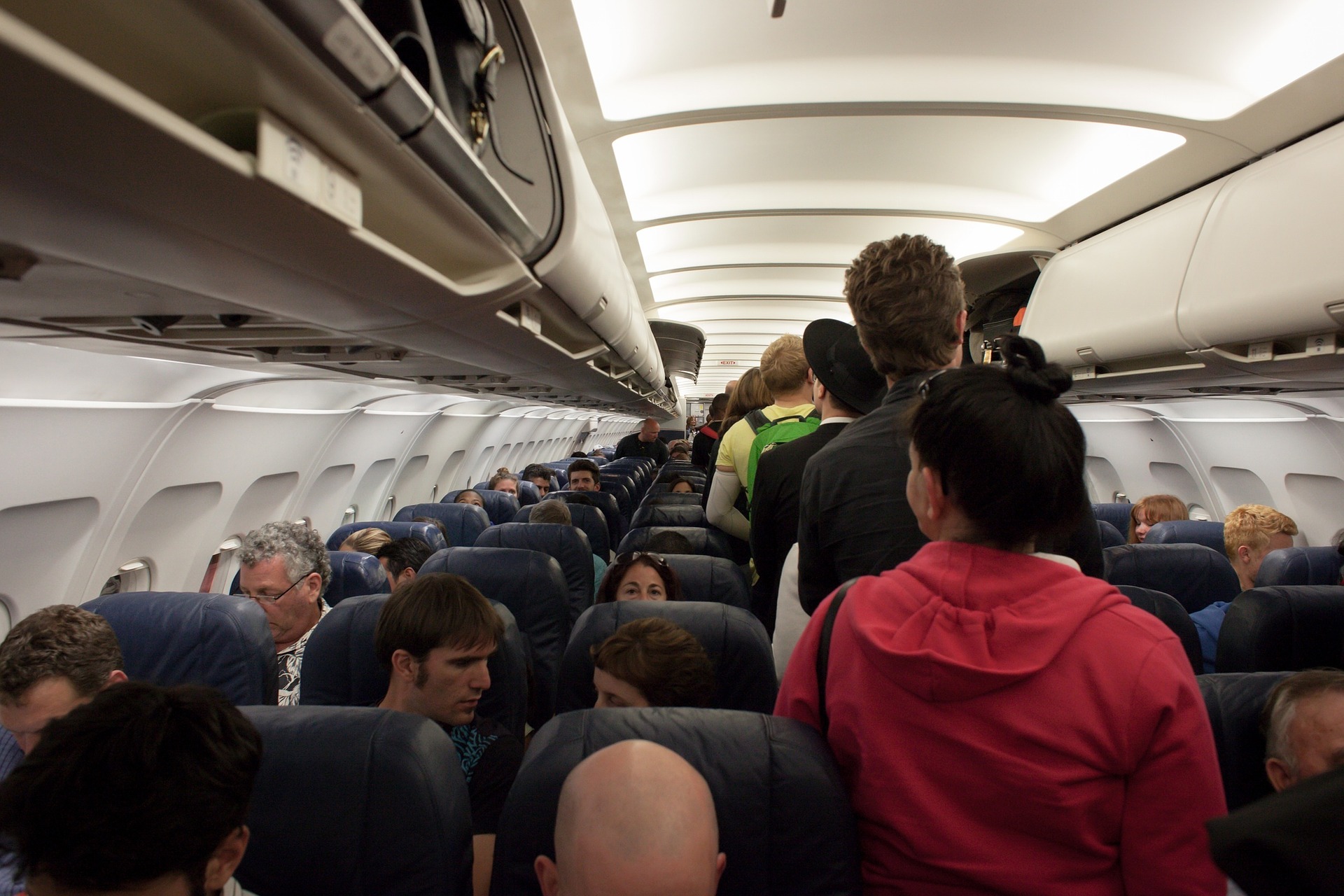Air travel may be the quickest way to get to your vacation destination, but it’s also one of the speediest ways for infectious diseases to spread between people, cities and countries.
So when patient zero — or a sneezing toddler — makes it onto the plane, what will minimize your chances of getting sick? An Arizona State University team that includes School of Human Evolution and Social Change Assistant Professor Anuj Mubayi; Department of Biomedical Informatics Associate Professor Matthew Scotch; School of Geographical Sciences and Urban Planning Assistant Research Professor Robert Pahle; and outside researchers Sirish Namilae, Ashok Srinivasan and Pierrot Derjany has turned to applied math and computing tools for the answer.
Their new study reveals that factors like plane size and boarding method can have a huge impact on infection rates, and includes new recommendations that may soon be adopted at an airway near you.
The best and worst airline policies for passenger health
Plane rides are a triple threat when it comes to spreading sickness: They force people into a closed space for a long period of time, make close contact with others unavoidable, and often bring together people from far-ranging geographic regions who may have different levels of disease vulnerability.
Because of this, officials often use travel restrictions to help prevent disease spread during an epidemic.
However, no system is completely foolproof; during the 2014-15 Ebola outbreak, for example, there were still a few incidents where infected passengers used commercial airplanes.
To make flights safer for that worst-case scenario, the research team created a hybrid model that evaluates how people move and how infectious diseases randomly spread through contact with a host. Its first application was to simulate how Ebola might spread on an airplane.
The model predicts how many passengers would be infected after using one of several different boarding methods, and also evaluates the impact of other factors like deplaning methods and plane size.
Common boarding methods force passengers to wait together in the aisle, leaving them vulnerable to contagious disease.
Unfortunately for current fliers, the commonly used three-section boarding technique, where passengers board by first class, middle zone and back section, is actually the worst strategy for reducing the number of infected. The reason this works so poorly is that it forces passengers to stand together in the aisle while they all wait to get to their seats, which means more time for a tightly packed group to be exposed to the contagious passenger.
The good news is that there are safer options. This includes the two-section, random method, where the plane is divided in two lengthwise sections and passengers board randomly within those sections. By preventing any hallway bottlenecks and keeping passengers from being next to any one person for very long, this approach results in the lowest number of new infections, according to the model.
“Surprisingly, changing policies — even those as simple as boarding patterns — can have a significant impact on the global spread of an infectious disease,” Mubayi said.
As far as getting off the plane, the team found that how it happens has little impact on infection rates because it’s a much faster process, so people aren’t all crowded together for as long.
For plane size, you might think the bigger the plane, the smaller your odds, right? Not quite. In fact, the study found that planes with less than 150 seats are better at reducing new infections; there are fewer susceptible people present overall, fewer people within a given person’s contact radius and less time spent moving through the plane to reach assigned seats.
“Using smaller airplanes during an outbreak, instead of completely banning flights to a specific destination, can drastically reduce the probability of introduction of infection,” Mubayi said.
Sunny skies ahead?
So, how does all this information make us safer? According to the model, if airlines used current boarding strategies during an Ebola epidemic, there would be a 67 percent chance of infection rates reaching the level of 20 air-travel-related cases per month — and that’s whether the planes are large or small.
If, on the other hand, airlines used the study’s safest boarding method, the two-section random strategy, then the chance of that level of infection drops to 40 percent.
A more concrete plan for safer flights is already lining up on the runway, so to speak. The research team has proposed its outbreak-reducing strategies at the government and airline levels, so that the only thing passengers catch are their flights.
The most promising results of this study, however, are its applications for scenarios outside of Ebola on a plane, Mubayi said. The model’s parameters, or the settings that it runs on, can be swapped out to test other directly transmitted diseases, including common ones like the flu, as well as disease spread in other crowded locations, like airports and subways.
This adaptability will give scientists and policy makers a huge advantage in the effort to stop outbreaks before they happen. By understanding more about how modern human environments operate in real time, these ASU researchers are beginning to make society's most populous airports, shopping centers and school campuses tools in the fight against disease, instead of liabilities.
More Science and technology

Diagnosing data corruption
You are in your doctor’s office for your annual physical and you notice the change. This year, your doctor no longer has your health history in five-inch stack of paperwork fastened together with…
Large-scale study reveals true impact of ASU VR lab on science education
Students at Arizona State University love the Dreamscape Learn virtual reality biology experiences, and the intense engagement it creates is leading to higher grades and more persistence for biology…

ASU-led space telescope is ready to fly
The Star Planet Activity Research CubeSat, or SPARCS, a small space telescope that will monitor the flares and sunspot activity of low-mass stars, has now passed its pre-shipment review by NASA.…



